Clean Energy
Gridlock: Visualizing the U.S. Clean Energy Backlog
The following content is sponsored by the National Public Utilities Council
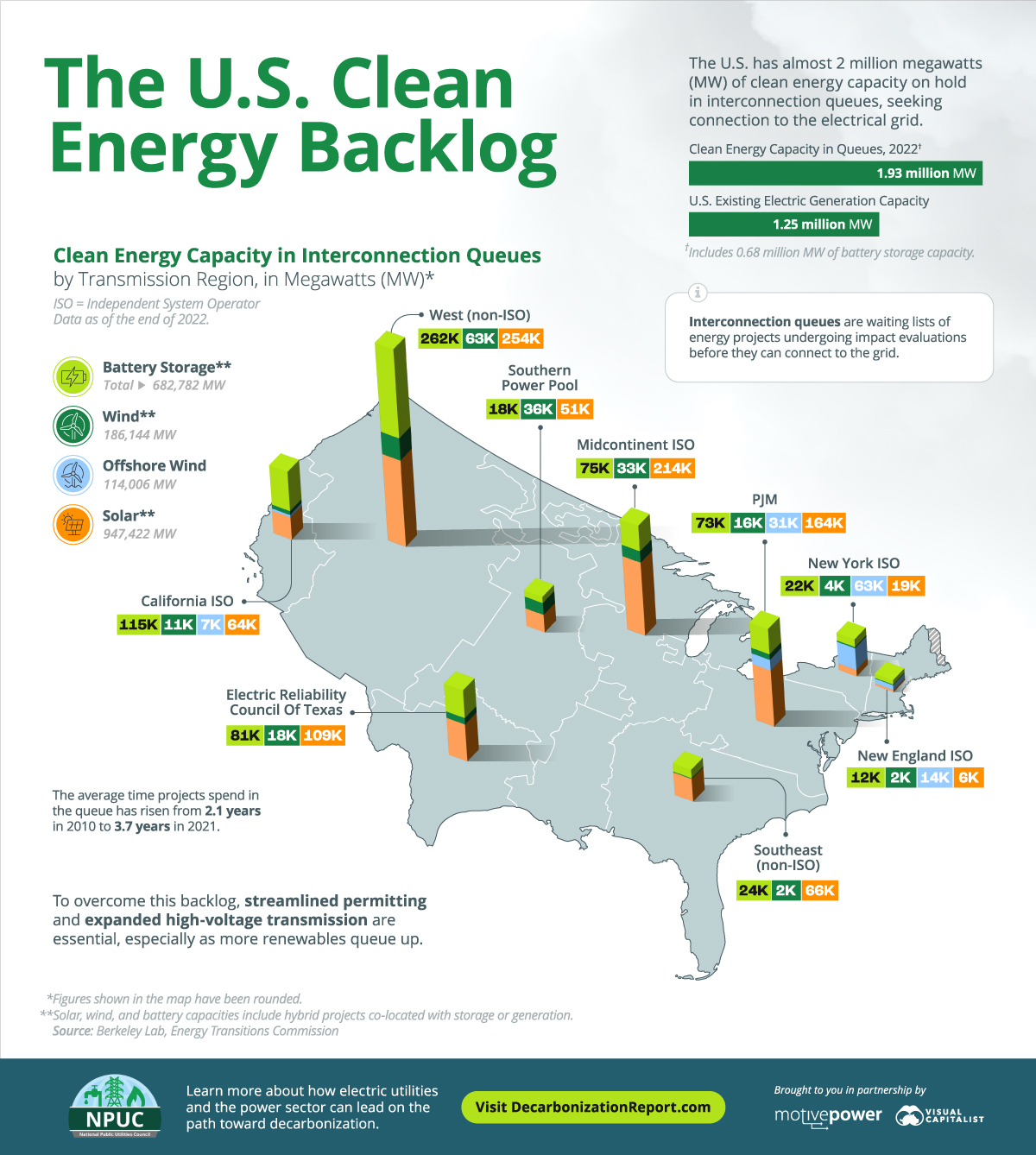
Gridlock: Visualizing the U.S. Clean Energy Backlog
The U.S. has almost 2 million megawatts (MW) of solar, wind, and storage capacity on hold in interconnection queues, seeking connection to the electrical grid.
However, the lack of transmission infrastructure, in addition to a lengthy permitting process, has resulted in a bottleneck of clean energy projects awaiting approval before they can be plugged into the grid.
This infographic sponsored by the National Public Utilities Council maps U.S. clean energy capacity in interconnection queues by transmission region, based on data from the Berkeley Lab.
But before we dive into the data, let’s fully understand what interconnection queues mean.
What are Interconnection Queues?
Before new power plants can be built and connected to the grid, they go through a series of impact assessments to ensure safety and reliability. The projects in this process form grid interconnection queues, which are essentially waitlists of proposed power plants seeking grid connection.
Here are some of the problems associated with U.S. interconnection queues:
- Wait times: The average time projects spend in the queue is up from 2.1 years in 2000 to 3.7 years in 2021, according to the Energy Transitions Commission.
- Withdrawal rates: Historically, most projects have withdrawn from the queue, with just 21% of projects seeking connection from 2000–2017 reaching commercial operation.
- Aging transmission: The U.S. grid is aging, and queued-up projects can end up facing large fees from the updates required to transmission infrastructure.
Although the backlog is alarming, the interconnection queues also show that project developers are invested in the clean energy transition. In fact, the amount of clean energy capacity in interconnection queues exceeds the amount needed to get to 90% zero-carbon electricity by 2035, according to Berkeley Lab.
U.S. Clean Energy in Queues
Solar and battery storage projects account for the majority of capacity in interconnection queues, followed by wind.
| Energy Source | Capacity in Interconnection Queues (MW) | % of Total |
|---|---|---|
| Solar | 947,452 | 49% |
| Battery Storage | 682,782 | 35% |
| Wind | 186,144 | 10% |
| Offshore Wind | 114,006 | 6% |
| Total | 1,930,384 | 100% |
Data as of the end of 2022.
Notably, 48% of all solar capacity in the queues is proposed as a “hybrid plant” that combines generation with battery storage. Similarly, over half of all battery storage capacity is proposed with some amount of generation.
The large number of hybrid and storage configurations show that project developers are addressing the intermittent nature of renewables by combining generation with storage.
Interconnection queues are managed by Independent System Operators (ISOs) and Regional Transmission Organizations (RTOs) that operate the grid and wholesale electricity markets in different regions. Here’s a look at the clean energy capacity in queues grouped by major transmission regions and ISOs:
| ISO/Transmission Region | Clean Energy Capacity in Interconnection Queues (MW) | % of Total |
|---|---|---|
| West (non-ISO) | 578,937 | 30% |
| Midcontinent ISO (MISO) | 321,723 | 17% |
| PJM (RTO) | 284,384 | 15% |
| Electric Reliability Council Of Texas (ERCOT) | 207,808 | 11% |
| California ISO (CAISO) | 196,792 | 10% |
| New York ISO (NYISO) | 108,163 | 6% |
| Southern Power Pool (SPP) | 105,398 | 5% |
| Southeast (Non-ISO) | 92,956 | 5% |
| New England ISO (ISO-NE) | 34,223 | 2% |
| Total | 1,930,384 | 100% |
Data as of the end of 2022. Percentages may not add up to 100 due to rounding.
Overall, the West (non-ISO) region has the most solar (254 GW), battery (262 GW), and onshore wind (63 GW) capacity in interconnection queues. Offshore wind capacity is highest in New York (63 GW), managed by the NYISO.
In 2022, California ISO did not accept any new interconnection requests due to the backlog from 2021. Meanwhile, the PJM announced that it would not review any new requests until 2025. Despite these slowdowns, over 700 GW of capacity was added to U.S. interconnection queues in 2022.
Unlocking the Gridlock
Given the current backlog, along with the incentives for new clean energy projects in the Inflation Reduction Act, clearing the gridlock is now more important than ever.
The large backlog, long wait times, and high withdrawal rates highlight the growing challenges in interconnection and transmission. Among other longer-term solutions, there are two ways to alleviate the gridlock:
- Expanding high-voltage transmission lines: Many solar and wind projects are located in remote areas and require high-voltage transmission lines to carry electricity to cities. Expanding the transmission network can allow more projects to connect to the grid.
- Streamlined permitting: Interconnection processes and the reviews involved are long and costly for project developers. Reforming processes and streamlining permits can help in shortening the wait times for projects in queues.
To address this problem, some grid operators have already made changes to their interconnection processes. Additionally, the Department of Energy has launched the Interconnection Innovation Exchange (i2X) in an effort to improve collaboration and transparency in interconnection.
History shows that most of the projects in interconnection queues will ultimately not be built. However, what’s clear is that the U.S. is on the road to decarbonization, and energy project developers are focusing on clean energy sources for the future.
Learn more about how electric utilities and the power sector can lead on the path toward decarbonization here.
Clean Energy
Visualized: The Four Benefits of Small Modular Reactors
What advantages do small modular reactors offer compared to their traditional counterparts?
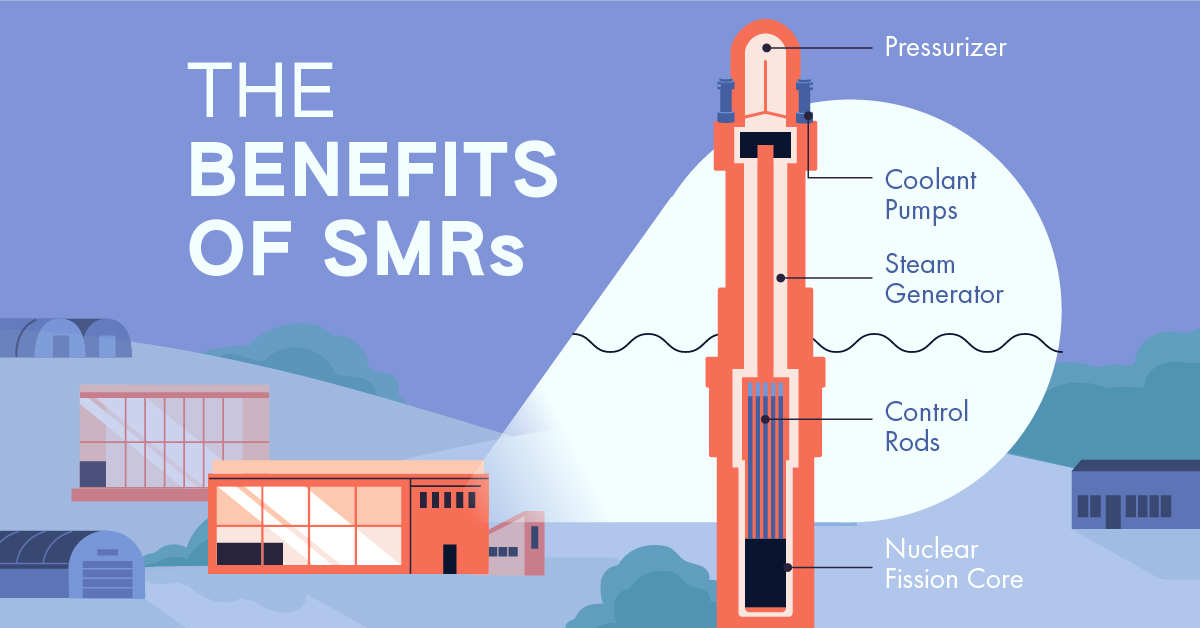
Visualized: The Four Benefits of Small Modular Reactors
Nuclear power has a crucial role to play on the path to net zero. Traditional nuclear plants, however, can be costly, resource-intensive, and take up to 12 years to come online.
Small modular reactors (SMR) offer a possible solution.
Created in partnership with the National Public Utilities Council, this infographic explores some of the benefits SMRs can offer their traditional counterparts. Let’s dive in.
The Four Key Benefits of SMRs, Explained
An SMR is a compact nuclear reactor that is typically less than 300 megawatts electric (MWe) in capacity and manufactured in modular units.
Here are some of the benefits they offer.
#1: Lower Costs
SMRs require a lower upfront capital investment due to their compact size.
SMRs can also match the per-unit electricity costs of traditional reactors due to various economic efficiencies related to their modular design, including design simplification, factory fabrication, and potential for regulatory harmonization.
#2: Quicker Deployment
Traditional nuclear plants can take up to 12 years to become operational. This is primarily due to their site-specific designs and substantial on-site labor involved in construction.
SMRs, on the other hand, are largely manufactured in factories and are location-independent, which minimizes on-site labor and expedites deployment timelines to as little as three years. This means they can be deployed relatively quickly to provide emissions-free electricity to the grid, supporting growing electricity needs.
#3: Siting Flexibility and Land Efficiency
SMRs have greater siting flexibility compared to traditional reactors due to their smaller size and modular design. In addition, they can utilize land more effectively than traditional reactors, yielding a higher output of electrical energy per unit of land area.
| Rolls-Royce SMR, UK (Proposed) | Median-Sized U.S. Nuclear Plant | |
|---|---|---|
| Capacity | 470 MW | 1,000 MW |
| Area Requirement | 10 Acres* | 832 Acres |
| Land/Space Efficiency | 47 MW/Acre | 1.2 MW/Acre |
*Estimated area requirement
Given their flexibility, SMRs are also suitable for installation on decommissioned coal power plant sites, which can support the transition to clean electricity while utilizing existing transmission infrastructure.
#4: Safety
SMRs have simpler designs, use passive cooling systems, and require lower power and operating pressure, making them inherently safer to operate than traditional reactors.
They also have different refueling needs compared to traditional plants, needing refueling every 3–7 years instead of the 1–2 years typical for large plants. This minimizes the transportation and handling of nuclear fuel, mitigating the risk of accidents.
The Road Ahead
As of early 2024, only five SMRs are operating worldwide. But with several other projects under construction and nearly 20 more in advanced stages of development, SMRs hold promise for expanding global emission-free electricity capacity.
With that said, certain obstacles remain for the wide-scale adoption of SMRs in the United States, which was particularly apparent in the 2023 cancellation of the NuScale SMR project.
To fully realize the benefits of SMRs and advance decarbonization efforts, a focus on financial viability, market readiness, and broader utility and public support may be essential.
Learn how the National Public Utilities Council is working toward the future of sustainable electricity.
Clean Energy
The $3 Trillion Clean Energy Investment Gap, Visualized
In this graphic, we explore the $3 trillion clean energy investment gap visualized by sector, according to BloombergNEF data.

The $3 Trillion Clean Energy Investment Gap, Visualized
Global investment in the clean energy transition grew by 17% in 2023, showing resilience despite geopolitical tensions, high interest rates, and inflation.
But was it enough to keep the world on track to hit net zero by 2050?
To answer this question, we compare 2023 clean energy investment by sector with what’s annually needed to reach net zero by 2050, in partnership with the National Public Utilities Council.
The Investment Gap, By Sector
According to BloombergNEF data, annual global investment in the energy transition is at an all-time high. Despite this, only the electrified heat and clean industry sectors are meeting the thresholds necessary to hit net zero by 2050.
| 2023 Investment | Required Annual Investment for Net Zero*, 2024–2030 | Investment Gap | |
|---|---|---|---|
| Electrified transport | $632B | $1,805B | $1,173B |
| Renewable energy | $623B | $1,317B | $694B |
| Electricity grids | $310B | $700B | $390B |
| Electrified heat | $63B | $50B | -$13B |
| Clean industry | $49B | $21B | -$28B |
| Energy storage | $36B | $93B | $57B |
| Nuclear energy | $33B | $284B | $251B |
| Carbon capture and storage (CCS) | $11B | $510B | $499B |
| Hydrogen | $10B | $62B | $52B |
| TOTAL | $1,767B | $4,842B | $3,075B |
*BloombergNEF’s Net-Zero 2050 Scenario
To stay on track for net zero by 2050, the yearly investments in electrified transport, renewable energy, power grids, and energy storage must more than double their current rates for the rest of the decade.
Hydrogen, nuclear, and carbon capture and storage (CCS) have an even steeper hill to climb and must grow 6, 9, and 46 fold, respectively.
The Path Forward
It’s important to note that despite the current annual investment gap of $3T, the clean energy industry continues to exhibit positive trends.
Investment in electrified transport, for instance, surpassed that in renewable energy for the first time in 2023, marking a win for the sector.
Emerging sectors also experienced robust expansion despite being furthest off-target. Investments in hydrogen tripled to $10B, CCS nearly doubled to $11B, and energy storage witnessed a 76% increase to reach $36B in 2023.
These encouraging developments underscore the industry’s potential to drive transformative change and pave the way for a more sustainable and resilient energy landscape in the years ahead.
Learn how the National Public Utilities Council is working toward the future of sustainable electricity.
-
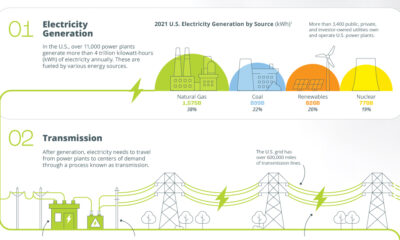
 Electrification1 year ago
Electrification1 year agoVisualized: How the Power Grid Works
-
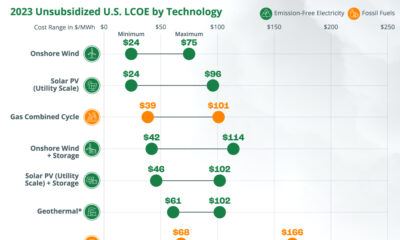
 Energy Shift9 months ago
Energy Shift9 months agoRanked: The Cheapest Sources of Electricity in the U.S.
-
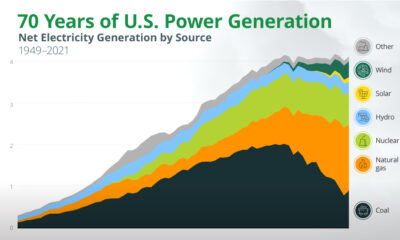
 Energy Shift1 year ago
Energy Shift1 year agoAnimated: 70 Years of U.S. Electricity Generation by Source
-

 Clean Energy1 year ago
Clean Energy1 year agoBreaking Down Clean Energy Funding in the Inflation Reduction Act
-
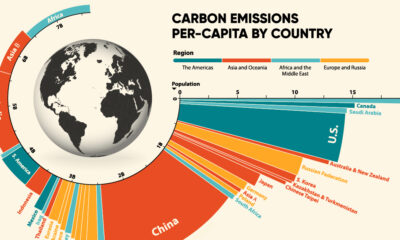
 Emissions1 year ago
Emissions1 year agoVisualizing Global Per Capita CO2 Emissions
-
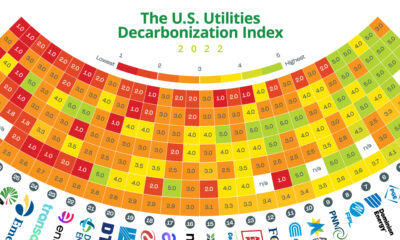
 Decarbonization1 year ago
Decarbonization1 year agoThe U.S. Utilities Decarbonization Index
-
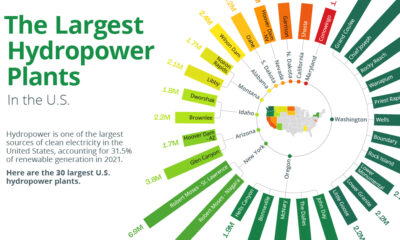
 Clean Energy1 year ago
Clean Energy1 year agoThe 30 Largest U.S. Hydropower Plants
-

 Clean Energy7 months ago
Clean Energy7 months agoBreaking Down the $110 Trillion Cost of the Clean Energy Transition

